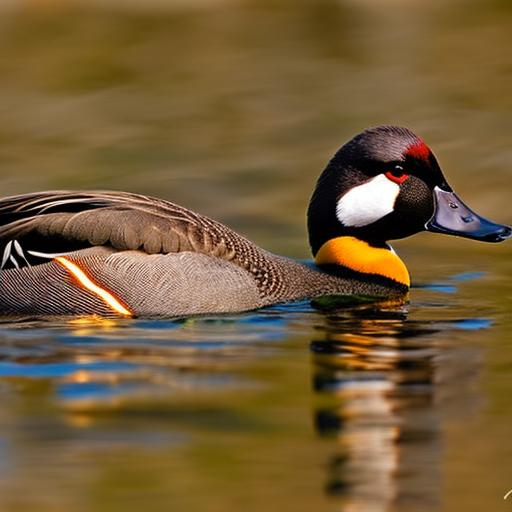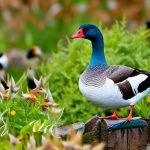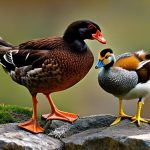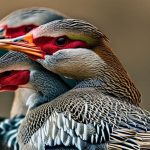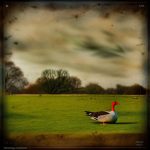Waterfowl hunting is a popular outdoor activity that involves hunting ducks and geese in their natural habitat. One of the key elements of a successful waterfowl hunt is the use of decoys. Decoys are lifelike replicas of ducks and geese that are strategically placed in the water to attract real birds. Choosing the right decoys is crucial for a successful hunt, as they play a vital role in luring waterfowl within shooting range.
Key Takeaways
- Decoys are important in waterfowl hunting as they attract ducks and geese to the hunting area.
- When choosing a decoy, factors to consider include species, size, and realism.
- Top decoy brands for ducks and geese hunting include Avian-X, Higdon, and Greenhead Gear.
- Types of decoys include full body, shell, and silhouette, each with their own advantages and disadvantages.
- The number of decoys needed for a successful hunt depends on the hunting location and species being hunted.
Understanding the Importance of Decoys in Waterfowl Hunting
Decoys are essential tools for waterfowl hunters, as they mimic the appearance and behavior of real ducks and geese. When placed in the water, decoys create the illusion of a flock of birds, which attracts other waterfowl to the area. Ducks and geese are social animals and are more likely to land near other birds, so having a spread of realistic decoys can significantly increase your chances of a successful hunt.
Realism is key when it comes to decoys. Waterfowl have keen eyesight and can easily spot inconsistencies or unnatural movements. Therefore, it is important to invest in high-quality decoys that closely resemble the species you are targeting. Realistic paint jobs, detailed feather patterns, and natural body postures are all factors that contribute to the effectiveness of decoys.
Choosing the Right Decoy: Factors to Consider
When choosing decoys for waterfowl hunting, there are several factors to consider. First and foremost, you need to determine which species you will be targeting. Different species of ducks and geese have distinct body shapes, colors, and behaviors, so it is important to choose decoys that accurately represent the species you are hunting.
Another factor to consider is your hunting location. Different regions have different types of waterfowl, so it is important to choose decoys that are commonly found in your area. Additionally, the type of water you will be hunting on (such as lakes, rivers, or marshes) may also influence your choice of decoys.
Budget is another important consideration when choosing decoys. Decoys can range in price from affordable to quite expensive, so it is important to set a budget and stick to it. While high-quality decoys may be more expensive, they are often more durable and realistic, making them a worthwhile investment in the long run.
Top Decoy Brands for Ducks and Geese Hunting
There are several top decoy brands in the market that are known for their quality and effectiveness. Some of the top brands include Avian-X, Higdon Outdoors, and Greenhead Gear.
Avian-X is a popular brand that is known for its highly realistic decoys. Their decoys are meticulously crafted with lifelike paint schemes and detailed feather patterns. Avian-X offers a wide range of species-specific decoys, including mallards, pintails, and Canada geese.
Higdon Outdoors is another reputable brand that offers a variety of decoys for waterfowl hunting. Their decoys are known for their durability and lifelike appearance. Higdon Outdoors offers both full-body and floating decoys, as well as motion decoys that simulate realistic movement.
Greenhead Gear, also known as GHG, is a well-known brand among waterfowl hunters. Their decoys are highly regarded for their realism and durability. GHG offers a wide range of species-specific decoys, including mallards, pintails, and snow geese.
While these are just a few examples of top decoy brands, there are many other reputable brands available on the market. It is important to do your research and read reviews to determine which brand best suits your needs and budget.
Types of Decoys: Full Body, Shell, and Silhouette
There are several types of decoys available for waterfowl hunting, each with its own advantages and disadvantages. The three main types of decoys are full body, shell, and silhouette decoys.
Full body decoys are the most realistic type of decoy and are designed to resemble a complete bird. They are typically made of durable materials and have lifelike paint schemes and feather details. Full body decoys are often more expensive and bulkier to transport, but they provide a highly realistic appearance that can attract wary waterfowl.
Shell decoys are hollow, lightweight decoys that consist of a top and bottom half. They are designed to be easily transported and set up in the field. Shell decoys are less expensive than full body decoys and can be effective when used in conjunction with other types of decoys. However, they may not be as realistic as full body decoys.
Silhouette decoys are flat, two-dimensional decoys that are typically made of lightweight material such as corrugated plastic or fabric. They are designed to be easily transported and set up in large numbers. Silhouette decoys are less expensive than full body or shell decoys and can be effective when used in large spreads. However, they may not be as realistic up close.
How Many Decoys Do You Need for a Successful Hunt?
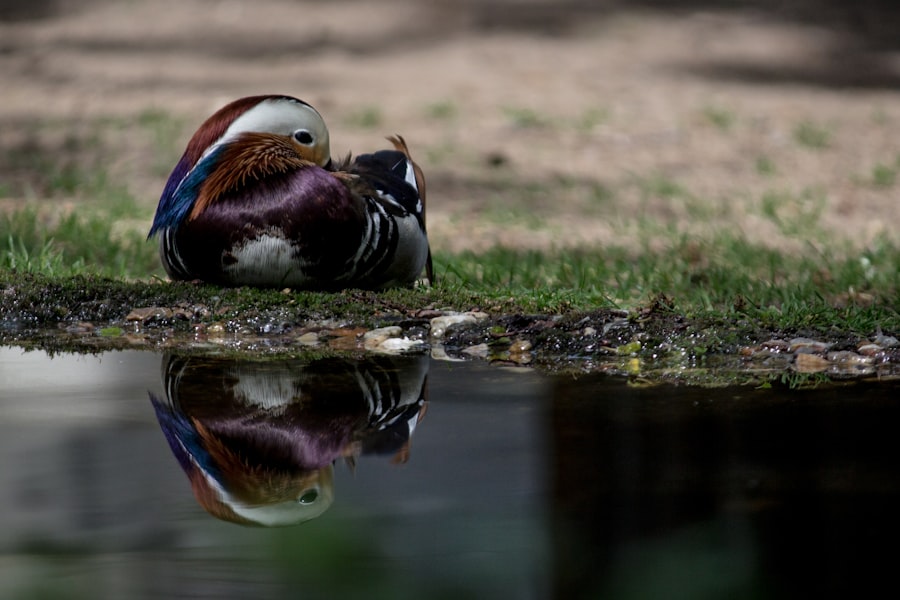
The number of decoys you need for a successful hunt depends on several factors, including the species you are targeting, the hunting location, and the time of year. In general, it is recommended to use a minimum of six to twelve decoys for ducks and twelve to twenty-four decoys for geese.
When determining the number of decoys needed, it is important to consider the size of the flock you are trying to imitate. Ducks and geese typically gather in large flocks, so having a spread of decoys that mimics a natural flock will increase your chances of attracting birds.
The hunting location is another important factor to consider when determining the number of decoys needed. In open water areas, such as lakes or large rivers, a larger spread of decoys may be necessary to attract birds from a distance. In smaller bodies of water or marshes, a smaller spread may be sufficient.
It is also important to consider the time of year and the behavior of the waterfowl you are targeting. During the early season, when ducks and geese are less wary, a smaller spread may be effective. However, as the season progresses and birds become more educated, a larger spread may be necessary to entice them within shooting range.
Setting Up Decoys: Tips and Tricks for Realistic Placement
Setting up decoys in a realistic manner is crucial for attracting waterfowl. Here are some tips and tricks for realistic decoy placement:
– Create a natural-looking spread: Ducks and geese are more likely to land near other birds, so it is important to create a spread that mimics a natural flock. Vary the spacing between decoys and use different body postures to create a realistic appearance.
– Pay attention to wind direction: Waterfowl prefer to land into the wind, so it is important to set up your decoys in a way that allows birds to approach from upwind. This will increase your chances of attracting birds within shooting range.
– Consider sun position: Ducks and geese prefer to land with the sun at their backs, as it provides better visibility. When setting up your decoys, try to position them in a way that takes advantage of the sun’s position.
– Use motion decoys: Adding motion to your decoy spread can make it more enticing to waterfowl. Motion decoys, such as spinning wing decoys or jerk strings, can simulate realistic movement and attract birds from a distance.
Decoy Maintenance: Keeping Your Decoys in Top Condition
Proper maintenance is important for keeping your decoys in top condition and ensuring their longevity. Here are some tips for cleaning and storing your decoys:
– Clean decoys regularly: After each hunt, it is important to clean your decoys to remove dirt, mud, and other debris. Use a mild detergent and warm water to gently scrub the decoys, taking care not to damage the paint or feather details.
– Repair any damage: Inspect your decoys regularly for any signs of damage, such as cracks or chips. Repair any damage as soon as possible to prevent further deterioration.
– Store decoys properly: When not in use, store your decoys in a cool, dry place to prevent damage from moisture or extreme temperatures. Use decoy bags or bins to protect them from dust and debris.
Decoy Accessories: Anchors, Lines, and Bags
In addition to decoys, there are several accessories that are essential for waterfowl hunting. These include anchors, lines, and bags.
Anchors are used to secure the decoys in place and prevent them from drifting away. There are different types of anchors available, including strap anchors, Texas rigs, and gang rigs. The type of anchor you choose will depend on the hunting location and personal preference.
Lines are used to attach the decoys to the anchors. It is important to use quality lines that are strong and durable, as they will be exposed to water and harsh weather conditions. Braided nylon lines or PVC-coated steel cables are commonly used for waterfowl hunting.
Decoy bags are used to transport and store your decoys. They provide protection against dust, debris, and moisture, and make it easier to carry multiple decoys at once. Look for bags that are made of durable material and have padded straps for added comfort.
DIY Decoys: Making Your Own Decoys at Home
For those who enjoy a hands-on approach, making your own decoys can be a rewarding and cost-effective option. There are several DIY decoy options available, including carving decoys from wood, carving decoys from foam, and using recycled materials.
Carving decoys from wood requires some woodworking skills and tools, but can result in highly realistic and durable decoys. Basswood and cedar are commonly used for carving duck and goose decoys. There are also carving kits available that provide templates and instructions for beginners.
Carving decoys from foam is a less traditional method, but can be an effective and lightweight option. Foam blocks can be carved into the desired shape and then painted to resemble the species you are targeting. Foam decoys are easy to transport and can be made in large numbers.
Using recycled materials is another option for making your own decoys. Old plastic bottles or milk jugs can be cut and shaped into the desired form, then painted to resemble ducks or geese. While these decoys may not be as realistic as commercially available options, they can still attract waterfowl when used in conjunction with other decoys.
Decoy Safety: Best Practices for Responsible Hunting
Responsible hunting practices are important for the safety of both hunters and waterfowl. Here are some tips for safe and ethical hunting:
– Always follow local hunting regulations: Familiarize yourself with the hunting regulations in your area and abide by them at all times. This includes obtaining the necessary licenses and permits, as well as adhering to bag limits and shooting hours.
– Practice firearm safety: Always handle firearms safely and responsibly. Keep the muzzle pointed in a safe direction, keep your finger off the trigger until ready to shoot, and treat every firearm as if it is loaded.
– Identify your target: Before taking a shot, be sure to positively identify your target and what is beyond it. Avoid shooting at birds that are out of range or obscured by vegetation.
– Respect other hunters: Be considerate of other hunters in the area and give them plenty of space. Avoid setting up too close to other hunters and be mindful of their decoy spreads.
– Retrieve downed birds: It is important to retrieve any downed birds as quickly as possible. Leaving wounded birds in the water is unethical and can lead to unnecessary suffering.
Decoys play a crucial role in waterfowl hunting, attracting ducks and geese within shooting range. Choosing the right decoys for your hunting needs is essential for a successful hunt. Factors such as species, location, and budget should be considered when selecting decoys.
There are several top decoy brands available on the market, each with its own strengths and weaknesses. It is important to do your research and read reviews to determine which brand best suits your needs.
Decoy maintenance and proper setup are also important for successful hunting. Regular cleaning and storage will ensure the longevity of your decoys, while realistic placement will attract waterfowl.
By choosing the right decoys, practicing responsible hunting, and following safety guidelines, you can enhance your waterfowl hunting experience and increase your chances of a successful hunt.
If you’re looking for effective ways to keep ducks and geese away from your property, you may find this article on “The Best Decoy to Keep Ducks and Geese” quite helpful. It provides valuable insights and tips on using decoys as a deterrent for these waterfowl. Additionally, if you’re interested in other poultry-related topics, you might want to check out these articles on “Chicken Coop Chester SC” and “What Vegetables Do Quails Eat?” for more information. For those interested in breeding geese, the article on “How to Care for Goslings” offers useful guidance.
FAQs
What is a decoy?
A decoy is an object that is used to attract birds or animals for hunting or observation purposes.
Why do people use decoys for ducks and geese?
People use decoys for ducks and geese to attract them to a specific area for hunting or observation purposes.
What are the different types of decoys for ducks and geese?
The different types of decoys for ducks and geese include full-body decoys, shell decoys, silhouette decoys, and motion decoys.
What is the best decoy to keep ducks and geese?
The best decoy to keep ducks and geese depends on the specific situation and location. However, motion decoys are generally considered to be the most effective.
How do motion decoys work?
Motion decoys work by simulating the movement of live ducks and geese. They can be powered by batteries or wind and can create ripples in the water or flapping wings to attract birds.
What should I consider when choosing a decoy for ducks and geese?
When choosing a decoy for ducks and geese, you should consider the type of bird you are targeting, the location and environment, and the budget. It is also important to choose decoys that are realistic and have natural-looking colors and patterns.
Meet Walter, the feathered-friend fanatic of Florida! Nestled in the sunshine state, Walter struts through life with his feathered companions, clucking his way to happiness. With a coop that’s fancier than a five-star hotel, he’s the Don Juan of the chicken world. When he’s not teaching his hens to do the cha-cha, you’ll find him in a heated debate with his prized rooster, Sir Clucks-a-Lot. Walter’s poultry passion is no yolk; he’s the sunny-side-up guy you never knew you needed in your flock of friends!

